Plus, a short history of cosplay and how one of the greatest movies of all time got its name …
There’s a blood-red shrine in Tainan dedicated to the great Ming-era general, Koxinga. At weekends it becomes a meeting place for DSLR-wielding photographers. Their subject matter isn’t the shrine however, the red walls are merely a backdrop to the main event – a handful of ornately dressed cosplay girls.
We got talking to one of the photographers who told us the rendezvous isn’t anything official. The photographers know that sometimes, but not always, the cosplay girls hang out at the shrine and likewise, the girls know that the photographers come to the shrine hoping to find them. The girls like having their pictures taken and the photographers enjoy taking them so it’s a win-win scenario.
One of the guys told us we should ask the girls for permission if we wanted to take some photos of our own rather than just diving in. We would have done this anyway but the girls were very sullen, which is part of the look, and didn’t say very much and our request for a photo from each one was met with exactly the same response – no words, the OK sign and an instant pose for the camera.
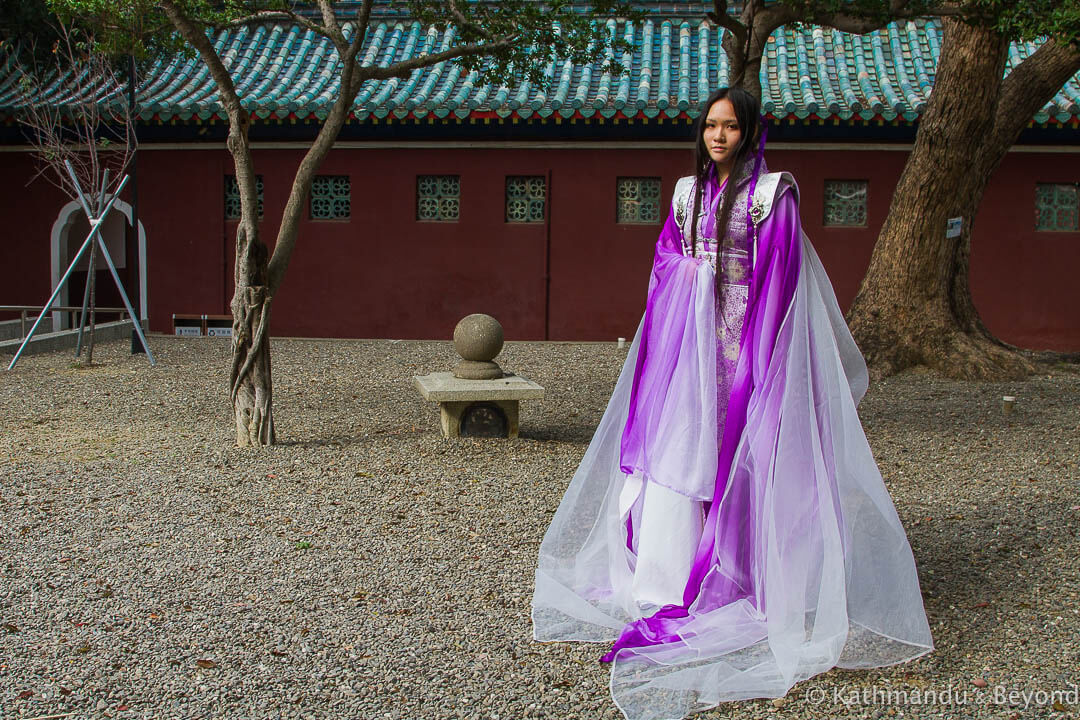 Cosplay at Koxinga Shrine, Tainan
Cosplay at Koxinga Shrine, Tainan
As well as being tremendously photogenic, there’s something quite fascinating about the whole cosplay thing. Although most people, including us, associate costume play (cosplay is a contraction of the two words) with Japan, its popularity extends to other northeast Asian countries (mainly Taiwan and South Korea ) as well as a few places in the west, including the United States (*).
(*) In the States, the popularity of cosplay is primarily based around science fiction (Star Trek, Star Wars, etc.), fantasy (Harry Potter, Lord of the Rings, etc.) and characters from American comic books (Captain America, Batman, etc.).
The origins of dressing up in elaborate costumes can be traced back to 15th and 16th century Europe and the masquerade balls of carnival season but, the whole point of cosplay is that it is all about dressing up as existing characters from popular culture/works of fiction and, historically, this can be sourced back as far as the Ming Dynasty in the late 17th century
In modern times, interestingly, the concept developed in the United States, not Japan as I originally assumed it had. As far back as the early 1900s, there are records of people attending masquerades dressed as contemporary science fiction characters and, not long after, fans of the genre began attending SCI-FI conventions also in costume. It became known as fan costuming and was helped along when inexpensive fiction magazines, known as pulp magazines or pulp fiction (*) came onto the American literary scene during the first half of the 20th century. By the beginning of World War II, fan costuming in the United States had increased in popularity and the whole concept of dressing up and imitating fictional personalities grew from there.
(*) Aha, the penny drops, well for me anyway, I’ve no doubt there are thousands of Pulp Fiction aficionados out there who already knew where the title of the film came from. According to Wikipedia “In 1994, Quentin Tarantino directed the film Pulp Fiction. The working title of the film was Black Mask, in homage to the pulp magazine of that name, and it embodied the seedy, violent, often crime-related spirit found in pulp magazines.”
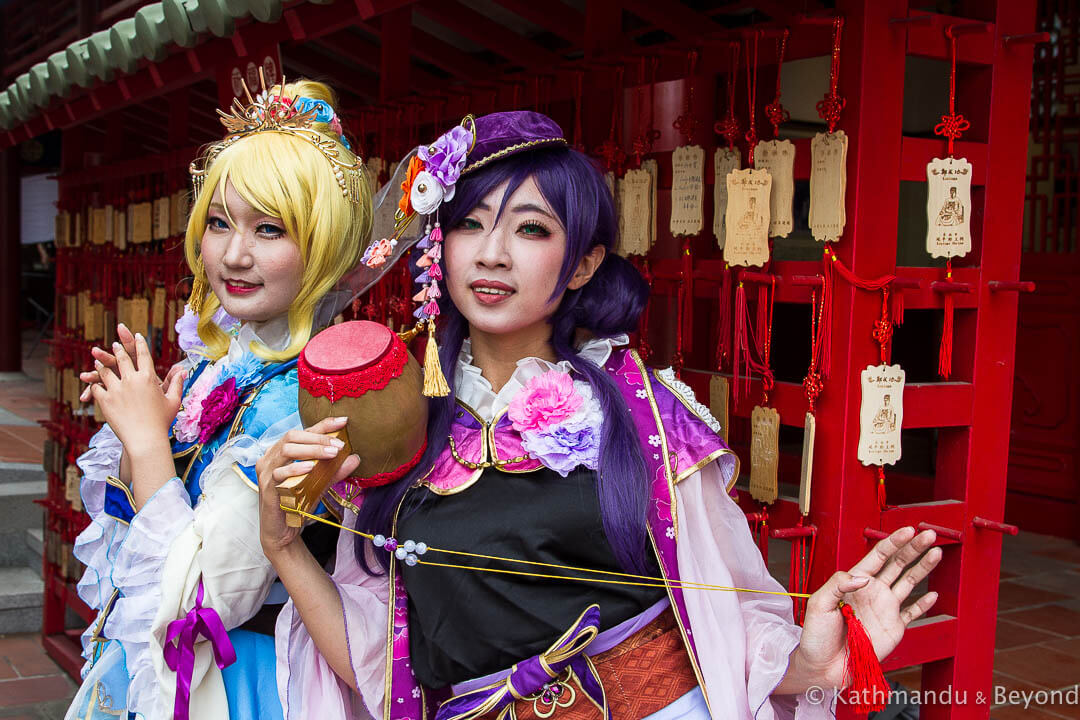 Cosplay at Koxinga Shrine, Tainan
Cosplay at Koxinga Shrine, Tainan
As for Northeast Asia, people were costuming in Japan from the early 1970s. It was known as reiyā (layer in English) but it wasn’t until the mid to late 1980s that the term ‘cosplay’ was introduced into Japanese society. Nobuyuki Takahashi, the founder of (and a writer for) a Japanese anime cartoon company called Studio Hard, had attended a World Science Fiction Convention (Worldcon) in Los Angeles and, when he returned to Japan, he wrote about what he had seen for a specialist anime magazine, using the term in his article. Thereafter, cosplay took off in Japan and, to a lesser extent, in other neighbouring countries. At a similar time, costume play began to decline in the States and it wasn’t until it was re-imported by the Japanese some years on that it became fashionable once more.
As well as small gathering, like the one we stumbled across in Tainan, there are several famous locations where you can see many more posing cosplayers, with Harajuku district in Tokyo being probably the most well-known. There are also competitions, conventions and exhibitions as well as PR and modelling opportunities for cosplayers who have turned their hobby into a career. The number of cosplay models (known as cosplay idols) who are involved in brand endorsement and other types of media and marketing is on the increase and, because of the natural crossover into the world of comic books (particularly Japanese-style anime and manga), video games and science fiction generally, the phenomenon is more popular than it’s ever been.
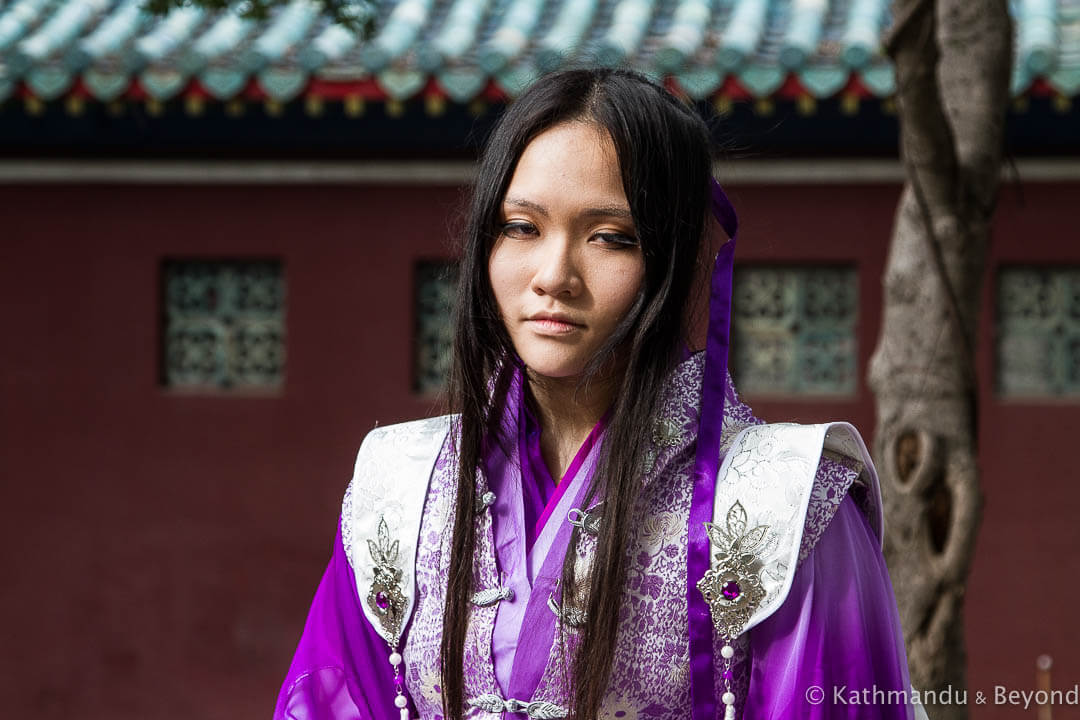 Cosplay at Koxinga Shrine, Tainan
Cosplay at Koxinga Shrine, Tainan
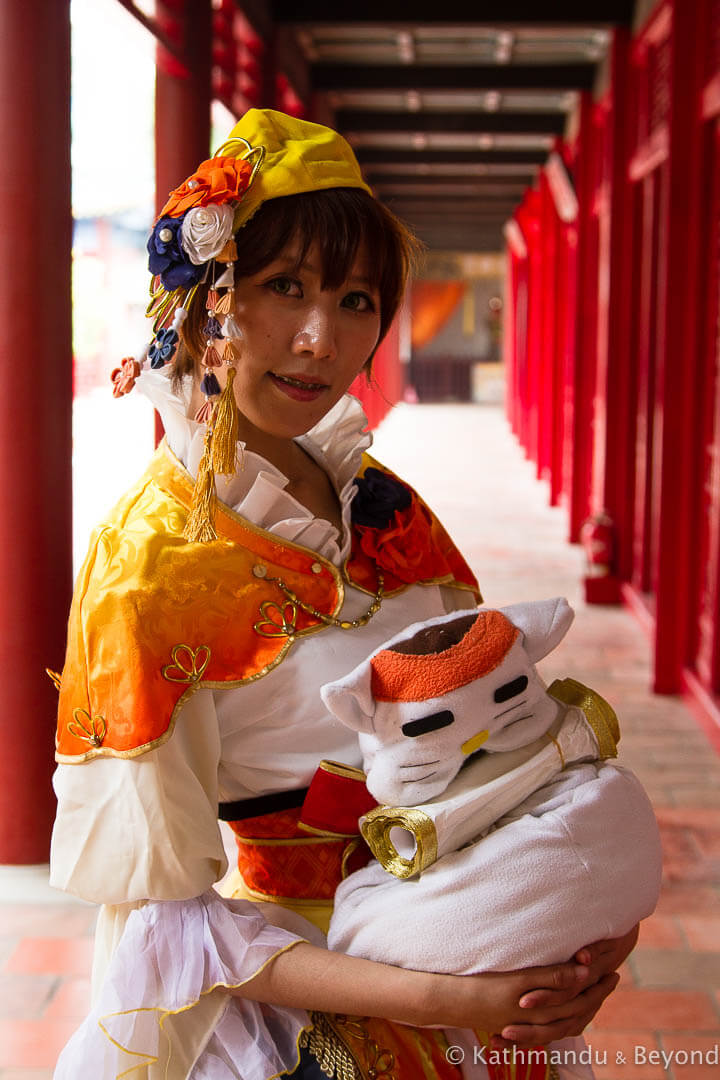
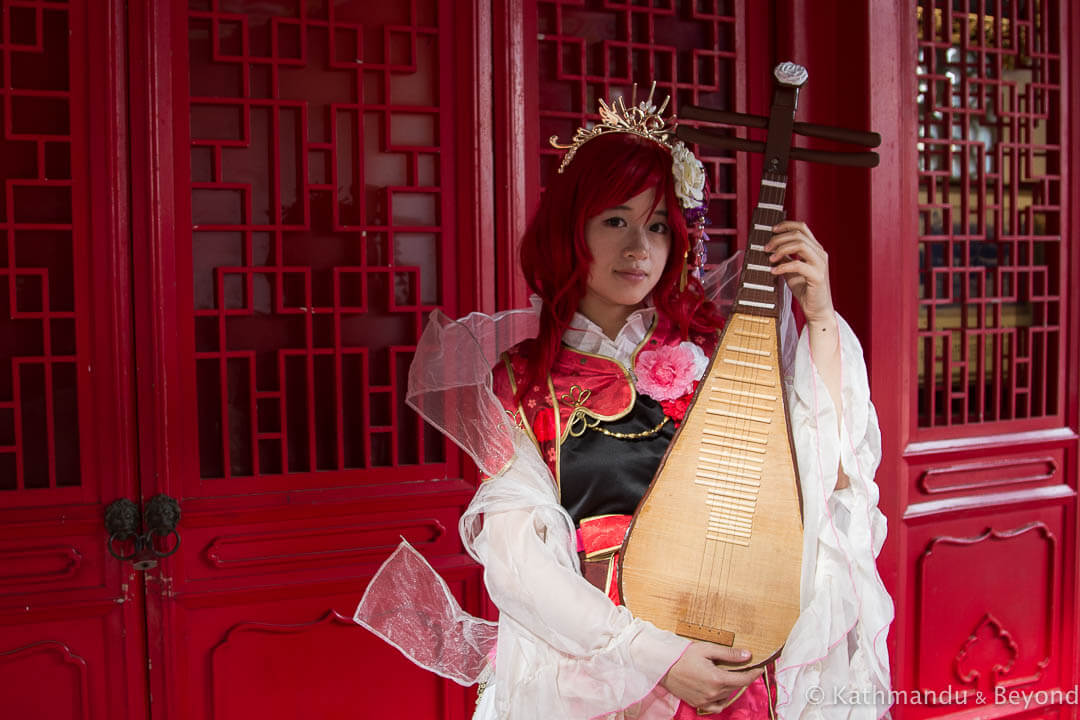
Cosplay at Koxinga Shrine, Tainan
After our encounter with the girls in Tainan, we found out about an area in Taipei where we could potentially see more cosplayers and hopefully get some additional photos. We located the place where they congregated in the capital and noted they would only be there at weekends. This was all fine and dandy for us as the location was close to our hotel and we were planning to arrive in Taipei on a Saturday morning so we thought we were all set. What we didn’t take into account, though, was the weather. It pissed down with rain for the entire Saturday and Sunday and, although we scoured the area where we hoped they would be, we knew there was very little chance they would be there.
And who could blame them? It must take hours to do the hair and makeup and sort out the costume and if I was cosplayer (I’m not by the way, although I reckon I could pull off a decent Super Mario or Willy Wonka!!) I certainly wouldn’t turn up and hang around when the weather was that horrible.
We were disappointed but understood and had to be content with taking a few photos of some anime artwork that we found nearby.
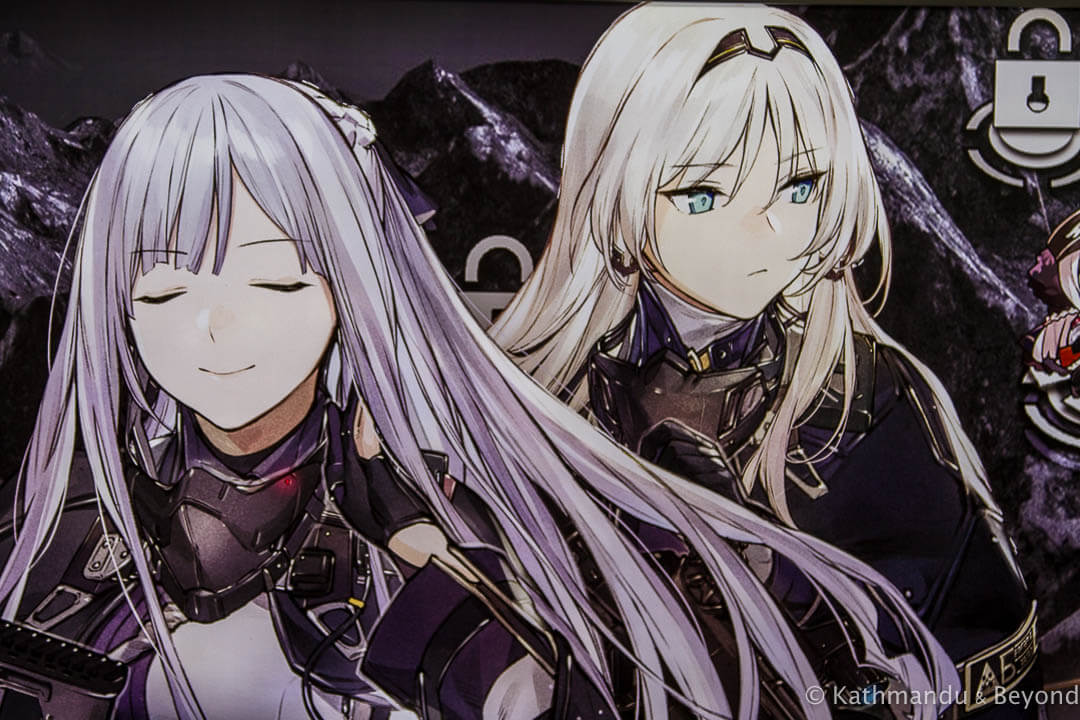
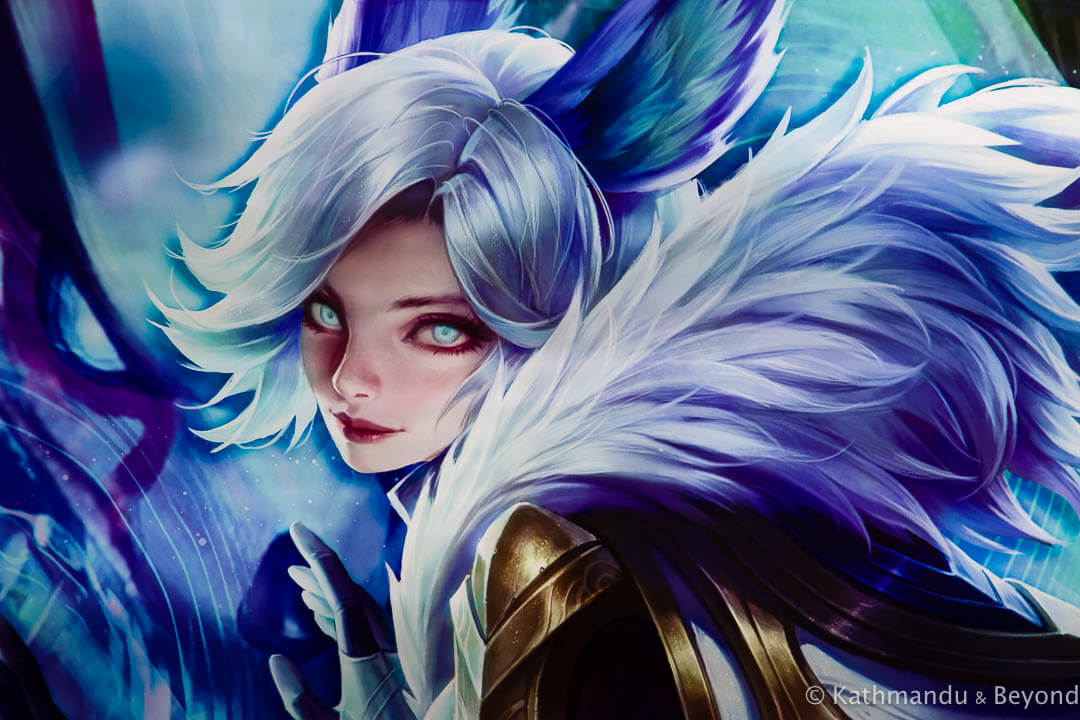
Anime artwork in Taipei
Where to see cosplay in Taiwan
The best time to head to Tainan’s Koxinga Shrine (GPS: 22.988016, 120.207756) is mid to late afternoon on a Sunday. As for Taipei, the area in which they reportedly hang out is the city’s main shopping district of Ximending. As to where exactly, I can’t tell you but, again, Sunday afternoon is probably the best time to try and find them. And finally, the cosplayers we met in Tainan all travelled up from the nearby port city of Kaohsiung so you may have luck seeing them there also?
READ MORE POSTS FEATURING TAIWAN
ARE YOU FASCINATED BY COSPLAY? WHY NOT PIN THIS POST…
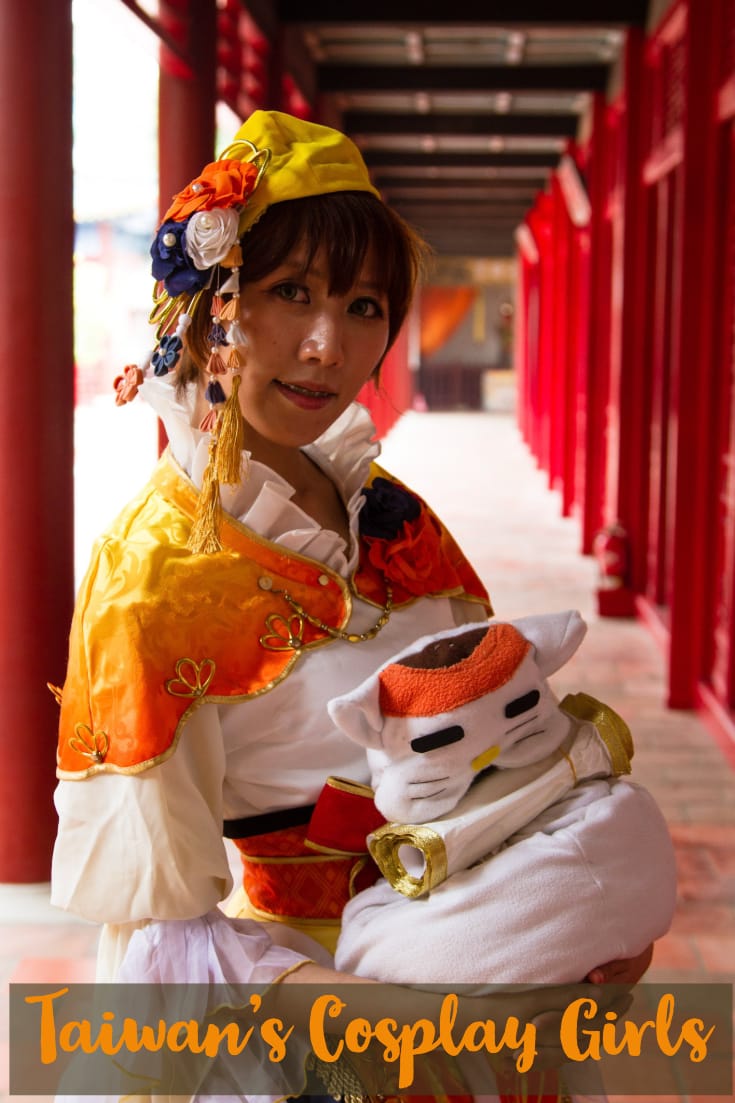
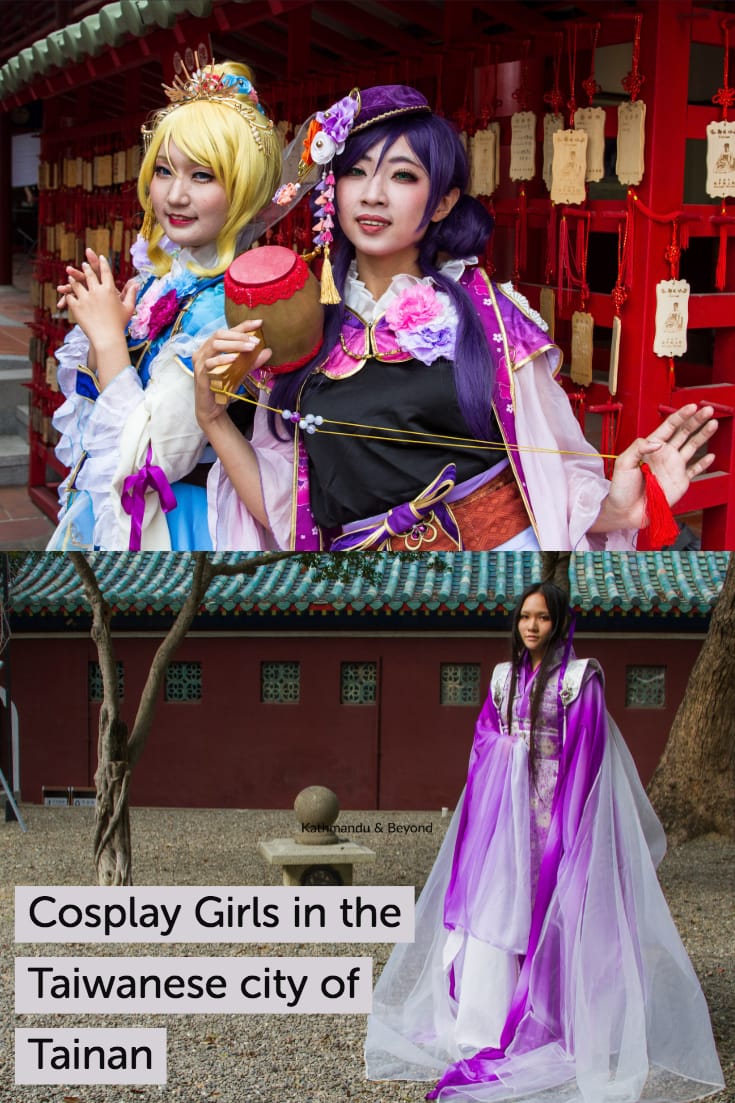
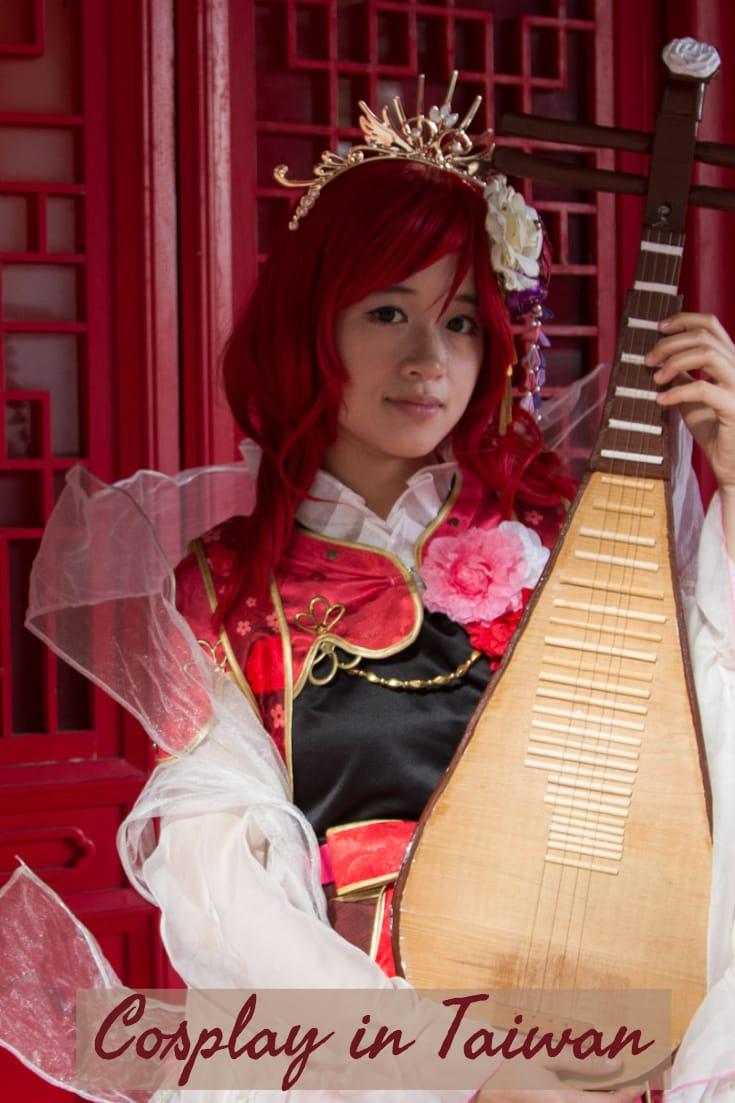

Sorry I missed this. I was in Tainan on a Sunday and planned to go to the Koxinga Temple in the afternoon, but that day turned out to be a day full of temple processions in another part of town, so I spent the afternoon watching those.
It was probably a good plan to stick with the temple processions as they can be good fun with all the drums and the firecrackers!